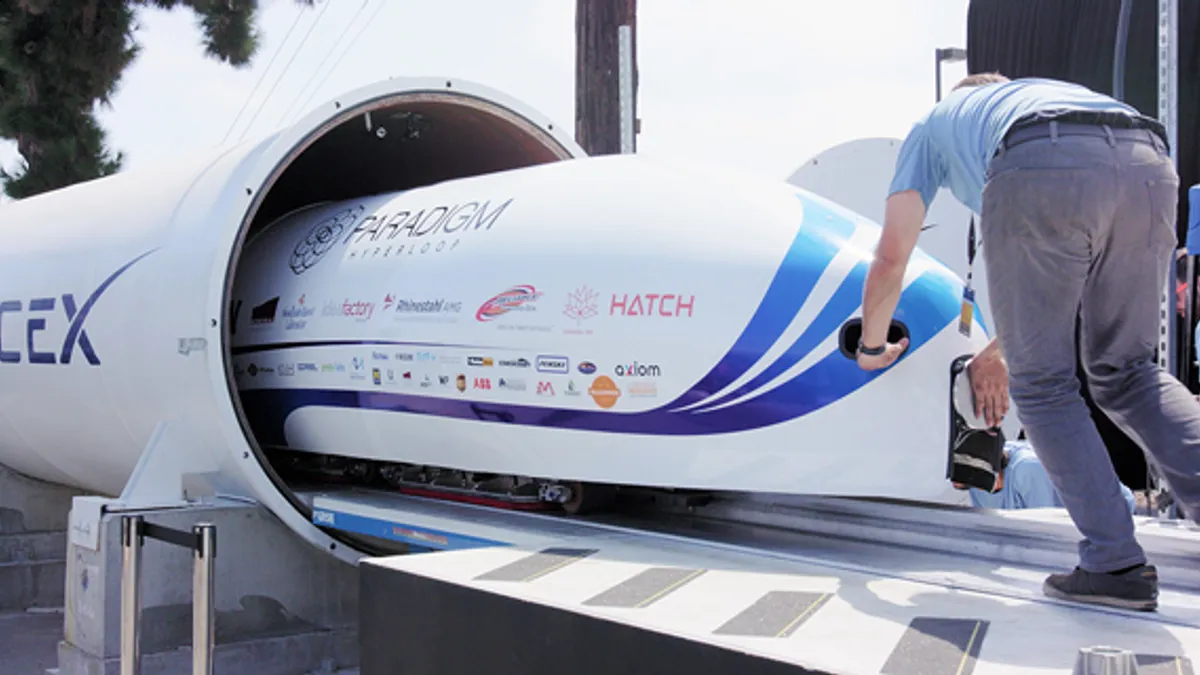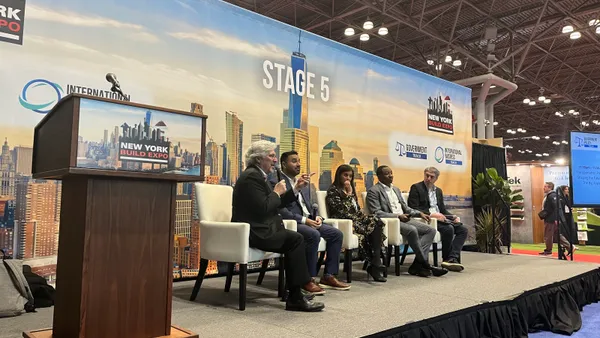Dive Brief:
- In a presentation to the Capital Area Metropolitan Planning Organization's (CAMPO) Transportation Policy Board in Austin, Texas, AECOM's Steven Duong updated the regional planning agency on high-speed transportation options between the Texas cities of Forth Worth and Laredo, with several stops along the Interstate 35 corridor. Scoring the highest in its evaluation was a hyperloop system.
- In addition to a hyperloop, AECOM also looked at maglev technology, which scored the highest after the hyperloop; high-speed rail; guaranteed transit, which is dedicated bus service along a managed lane with a guaranteed timetable backed by a fare refund; conventional rail; and higher-speed rail, which travels 70 mph to 90 mph.
- Although hyperloop technology has not yet been realized in practical terms, Duong, associate vice president of planning and urbanism in the Dallas-Fort Worth area, said that it has come far enough in the last four years to be evaluated as a serious transit option. There is a good possibility that it could be ready for deployment in the same timeframe that construction of the Fort Worth-Laredo route is ready to launch, optimistically, he said, in the next few decades.
Dive Insight:
One of the reasons that the hyperloop scored so high, Duong said, is that such a system has the ability to add stops in multiple cities without a significant impact to overall speed. Other questions AECOM sought to answer, he said, was which option made the most technical sense for Texas as far as engineering and design and how the alternatives "stack up" with previous transit studies.
Additional factors Duong's team considered were technological maturity of the options, potential cost and environmental impact.
A high-speed route along I-35, at first, he said, would likely be most attractive to "super commuters," those who travel frequently for work between the cities on the route. Eventually, a hyperloop system could be used for shipping and travel between Texas and Mexico.
After Duong's presentation, CAMPO officials asked about the costs of a hyperloop. According to AECOM official, construction and operational costs cannot be nailed down at this point because there are no working hyperloop examples from which to draw.
AECOM's final report, Duong added, is meant to serve as an initial dialogue about high-speed options for the region.
Meanwhile, bullet train developer Texas Central is making progress with its line between Dallas and Houston. Last month, it signed a preconstruction agreement with Kiewit company Mass. Electric Construction Co. The early contractor involvement agreement (ECI) will see Mass. Electric help Texas Central develop a scope of work, flesh out costs and aid in formulating an execution plan and schedule for the installation of core rail systems, equipment and critical systems like electrical power, signaling and communications.
Texas Central expects to have an executed specialty systems construction contract with Mass. Electric by the end of the year, with construction possibly starting in the summer after federal approval comes through.
Holly Reed, managing director of external affairs at Texas Central, told Construction Dive that the construction process will likely take five to six years.
In September, Texas Central signed a $14 billion design-build agreement with the joint venture of Italian civil engineering contractor Salini Impregilo and The Lane Construction Corp., a division of Salini. Work includes the design and construction of viaducts and embankments, installation of the track, alignment and construction of maintenance and equipment structures, all of which ties in to the preconstruction and engineering duties that the JV has been performing.














